 Rey and his wife were the creators of the Curious George series of children’s books. George, an impish monkey, first appeared in Rey’s little-remembered Cecily G. and the Nine Monkeys and was so well received that the Reys decided to write an entire book about him. Their work was interrupted by the outbreak of WWII, however, and the Reys, who were Jews, fled Paris hours before it fell to the Nazis, taking with them the illustrated manuscript of Curious George. How did they escape? Discuss
Rey and his wife were the creators of the Curious George series of children’s books. George, an impish monkey, first appeared in Rey’s little-remembered Cecily G. and the Nine Monkeys and was so well received that the Reys decided to write an entire book about him. Their work was interrupted by the outbreak of WWII, however, and the Reys, who were Jews, fled Paris hours before it fell to the Nazis, taking with them the illustrated manuscript of Curious George. How did they escape? Discuss
Source: The Free Dictionary
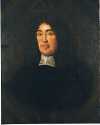 Oates was an Anglican priest whose whole career was marked with intrigue and scandal. In 1678, he invented the story of the Popish Plot, a fictitious Jesuit conspiracy to kill Charles II and place his Catholic brother James—later James II—on the throne. Oates’s testimony resulted in a frenzy of anti-Catholic hatred throughout England, and caused more than 30 people to be executed. He was finally convicted of perjury and imprisoned in 1685. Who conspired with Oates to invent the plot?
Oates was an Anglican priest whose whole career was marked with intrigue and scandal. In 1678, he invented the story of the Popish Plot, a fictitious Jesuit conspiracy to kill Charles II and place his Catholic brother James—later James II—on the throne. Oates’s testimony resulted in a frenzy of anti-Catholic hatred throughout England, and caused more than 30 people to be executed. He was finally convicted of perjury and imprisoned in 1685. Who conspired with Oates to invent the plot? 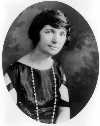 Sanger married and had three children before becoming active in the women’s labor movement and the Socialist Party. Convinced that control over childbearing was the key to female emancipation, she published a pamphlet in 1914 in which she called for legalization of contraception and coined the term “birth control.” Founder of the organization that became Planned Parenthood, Sanger remains controversial for her views on contraception as well as race. Sanger was the sixth of how many children?
Sanger married and had three children before becoming active in the women’s labor movement and the Socialist Party. Convinced that control over childbearing was the key to female emancipation, she published a pamphlet in 1914 in which she called for legalization of contraception and coined the term “birth control.” Founder of the organization that became Planned Parenthood, Sanger remains controversial for her views on contraception as well as race. Sanger was the sixth of how many children? 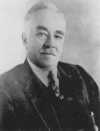 After serving as apprentice to a Lancaster, Pennsylvania, confectioner, Hershey opened his own candy store in Philadelphia. By 1886, he was back in Lancaster, where he soon found success making caramels using fresh milk. By 1900, he had sold his caramel business to concentrate on chocolate. In 1903, he built a factory to manufacture five-cent chocolate bars, which became so popular that “Hershey” became virtually synonymous with chocolate in the US. To what causes did Hershey donate his fortune?
After serving as apprentice to a Lancaster, Pennsylvania, confectioner, Hershey opened his own candy store in Philadelphia. By 1886, he was back in Lancaster, where he soon found success making caramels using fresh milk. By 1900, he had sold his caramel business to concentrate on chocolate. In 1903, he built a factory to manufacture five-cent chocolate bars, which became so popular that “Hershey” became virtually synonymous with chocolate in the US. To what causes did Hershey donate his fortune? 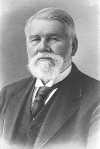 Gatling, an inventor who began his career creating agricultural devices including a rice-sewing machine and a steam plow, is best remembered as the creator of a rapid-firing gun that was the precursor of the modern machine gun. He offered his Gatling gun to the Union army in the Civil War, but only a few were put into use toward the war’s end. For a time, Gatling worked on improving the gun, but he eventually went back to devising agricultural machinery. What were some of his other inventions?
Gatling, an inventor who began his career creating agricultural devices including a rice-sewing machine and a steam plow, is best remembered as the creator of a rapid-firing gun that was the precursor of the modern machine gun. He offered his Gatling gun to the Union army in the Civil War, but only a few were put into use toward the war’s end. For a time, Gatling worked on improving the gun, but he eventually went back to devising agricultural machinery. What were some of his other inventions? 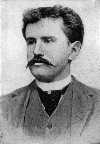 O. Henry was the pseudonym of American short-story writer William Sydney Porter. As a young man, he wrote for newspapers and worked as a bank teller in Texas, where he was convicted of embezzlement. Although many people believed him innocent, he fled to Honduras. He soon returned, however, when his wife became fatally ill. He eventually served three years in prison, during which time he began writing short stories noted for their surprise endings. What was the origin of his pen name?
O. Henry was the pseudonym of American short-story writer William Sydney Porter. As a young man, he wrote for newspapers and worked as a bank teller in Texas, where he was convicted of embezzlement. Although many people believed him innocent, he fled to Honduras. He soon returned, however, when his wife became fatally ill. He eventually served three years in prison, during which time he began writing short stories noted for their surprise endings. What was the origin of his pen name?  One of golf’s most charismatic players, Palmer was instrumental in popularizing the sport in the US. After winning the US Amateur championship, Palmer turned professional in 1954 and won the Canadian Open in 1955. Between 1958 and 1964, he won the Masters four times, the British Open twice, and the US Open once. In 1967, he became the first golfer to earn more than $1 million in prize money. One of the first television-age golfing personalities, he attracted a loyal following known as what?
One of golf’s most charismatic players, Palmer was instrumental in popularizing the sport in the US. After winning the US Amateur championship, Palmer turned professional in 1954 and won the Canadian Open in 1955. Between 1958 and 1964, he won the Masters four times, the British Open twice, and the US Open once. In 1967, he became the first golfer to earn more than $1 million in prize money. One of the first television-age golfing personalities, he attracted a loyal following known as what? 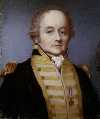 Though he had a long and notable career in the British Royal Navy, Bligh is chiefly remembered for the 1787 mutiny on his ship, the HMS Bounty, during which he and those crew members who remained loyal to him were set adrift in a longboat. In a remarkable act of seamanship, with neither a map nor a compass, Bligh guided them across 3,618 mi (5,822 km) of ocean to the nearest European outpost, Timor. In the 1770s, Bligh served as the sailing master on what famous explorer’s final voyage?
Though he had a long and notable career in the British Royal Navy, Bligh is chiefly remembered for the 1787 mutiny on his ship, the HMS Bounty, during which he and those crew members who remained loyal to him were set adrift in a longboat. In a remarkable act of seamanship, with neither a map nor a compass, Bligh guided them across 3,618 mi (5,822 km) of ocean to the nearest European outpost, Timor. In the 1770s, Bligh served as the sailing master on what famous explorer’s final voyage? 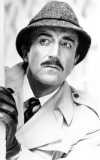 Sellers was a British actor who earned international stardom playing a wide range of characters at a time when rigid typecasting was the norm. The son of vaudeville performers, he began appearing with his parents as a boy. He started making films in the 1950s and later gained enormous popularity as the bumbling Inspector Clouseau in the Pink Panther series. In Dr. Strangelove, he plays three characters, including the titular role. What fourth character was he initially supposed to play?
Sellers was a British actor who earned international stardom playing a wide range of characters at a time when rigid typecasting was the norm. The son of vaudeville performers, he began appearing with his parents as a boy. He started making films in the 1950s and later gained enormous popularity as the bumbling Inspector Clouseau in the Pink Panther series. In Dr. Strangelove, he plays three characters, including the titular role. What fourth character was he initially supposed to play?  An early rock ‘n’ roll star, Holly began as a country-and-western singer and gradually added rhythm-and-blues elements to his innovative style. With his band, the Crickets, he established the standard rock instrumentation of two guitars, bass, and drums, and toured the US extensively for two years before his death in a plane crash. He became one of rock’s most enduring cult figures and much of his material was released posthumously. Who else died in the plane crash that killed him?
An early rock ‘n’ roll star, Holly began as a country-and-western singer and gradually added rhythm-and-blues elements to his innovative style. With his band, the Crickets, he established the standard rock instrumentation of two guitars, bass, and drums, and toured the US extensively for two years before his death in a plane crash. He became one of rock’s most enduring cult figures and much of his material was released posthumously. Who else died in the plane crash that killed him?